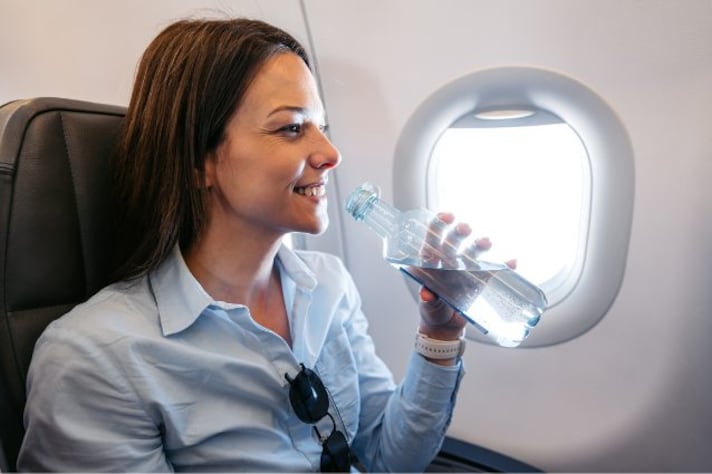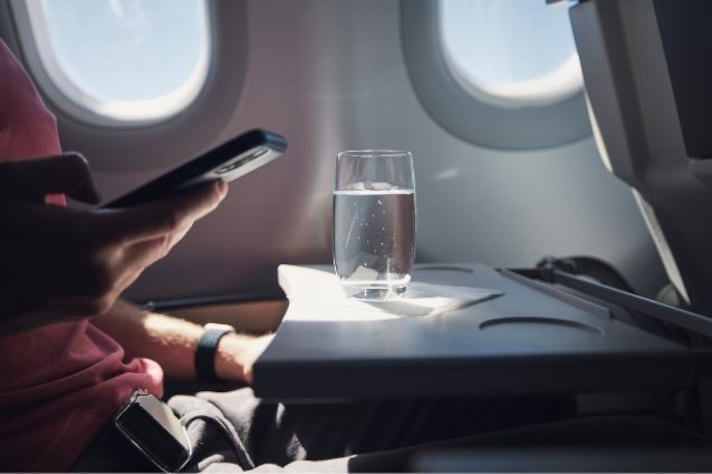
When it comes to airplanes and flying, there's no shortage of complaints. The cramped seats, the delays, the endless security lines—these are all familiar gripes. But if there's one thing that seems universally agreed upon, it's that airplane food leaves much to be desired. Often bland and plasticky, it's hardly something to look forward to. However, drinks seem to offer a safe haven from this culinary desert. Or do they? One aspect of in-flight refreshments that you should definitely avoid is the ice.
Why is Airplane Ice So Bad?
The ice served on airplanes is best left untouched, and here's why. Airplane ice often comes from the water tanks on the aircraft, which are not always cleaned as frequently as they should be. These tanks can harbor bacteria and other contaminants that you certainly don’t want in your drink. The issue isn't necessarily with the freezing process itself, but with the water used to make the ice. Studies and reports have shown that the quality of water on planes can sometimes be questionable, leading to concerns about the ice cubes served.

Moreover, the handling and storage of ice can also be problematic. The ice on planes is typically stored in large bins and handled by multiple people throughout the flight. Given the tight quarters and limited facilities on an airplane, maintaining strict hygiene standards can be challenging. This increases the risk of contamination, making that seemingly harmless ice cube a potential source of unwanted germs. Sticking to bottled beverages or drinks without ice is a safer choice to ensure your in-flight comfort and health.
Can You Bring Your Own Ice?
Unfortunately, this isn’t practical. The Transportation Security Administration (TSA) has strict rules about carrying liquids through security. Ice, as it melts, falls under these liquid regulations, making it difficult to bring your own without hassle. Additionally, keeping ice frozen throughout your journey poses its own set of challenges.

Given these constraints, the best advice is to resist the temptation of ordering a drink that requires ice. Instead, opt for pre-chilled beverages or drinks served without ice. Most airlines offer a range of options, including bottled water, juices, and sodas, which can be enjoyed safely without the need for potentially contaminated ice.
;Resize,width=767;)
